
Xray/Face front stock photo. Image of diagnostic, illness 198832
The high cost of portable X-ray machines is also an issue. While they are cheaper than the larger fixed machines, they are still very expensive. The Stop TB Partnership says that the price of.
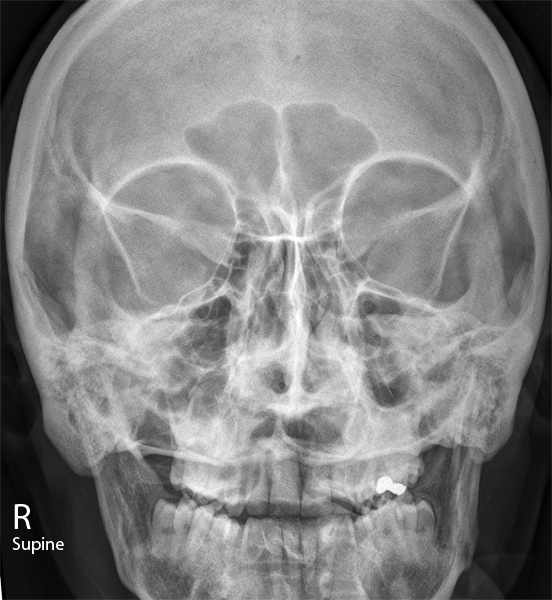
Facial Bone Radiography wikiRadiography
Compare the injured side with the uninjured side. Fractures of the Facial Skeleton. Within the facial skeleton, there are relative areas of strength, which tend to be spared by fractures lines. These are: Alveolar ridge of the maxilla. Nasofrontal process of the maxilla. Body of the zygoma. Fractures of the Orbits.
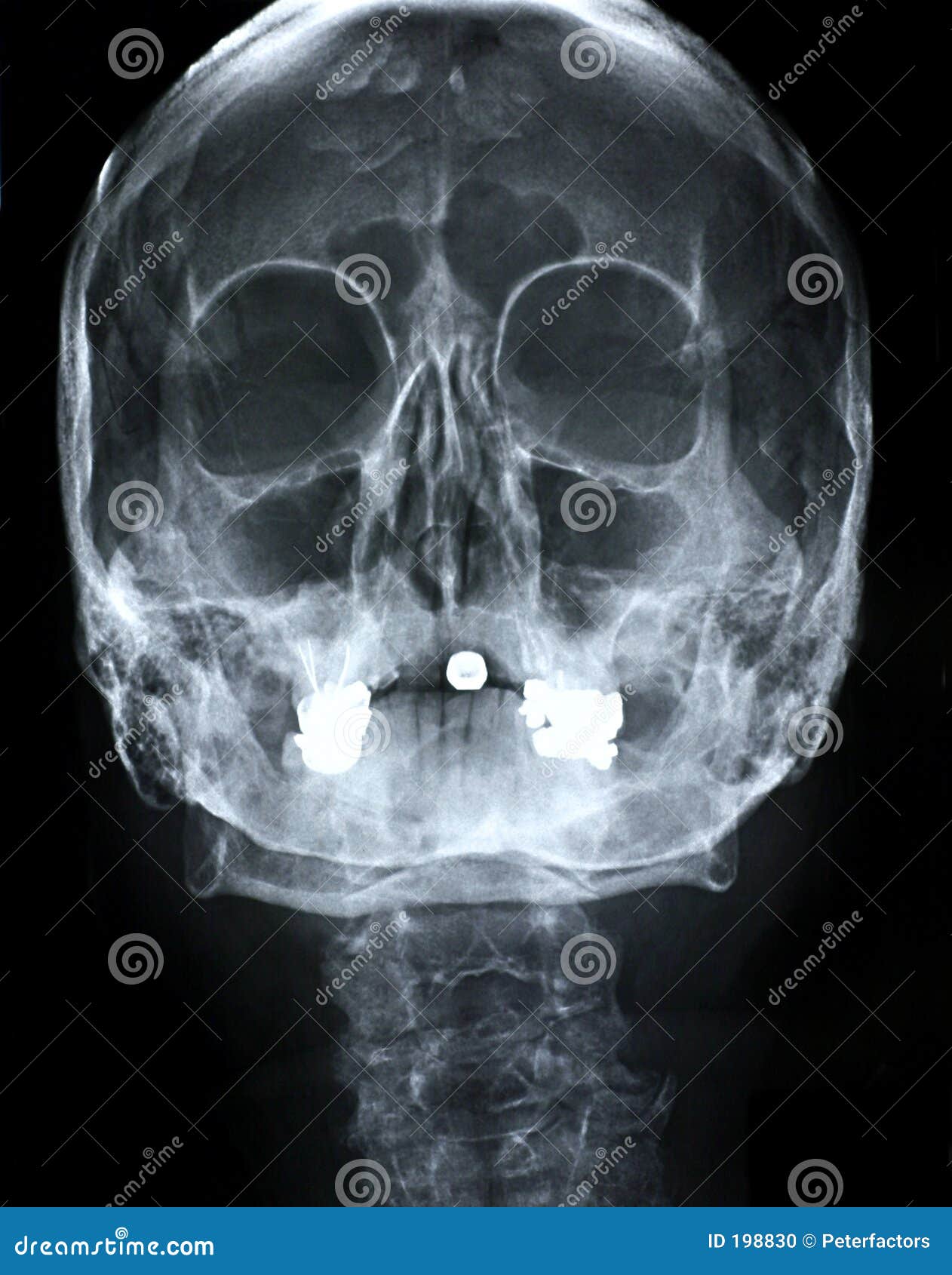
Xray/Face Front Stock Photo Image 198830
Facial fractures are commonly caused by blunt or penetrating trauma at moderate or high levels of force. Such injuries may be sustained during a fall, physical assault, motor vehicle collision, or gunshot wound. The facial bones are thin and relatively fragile, making them susceptible to injury. Epidemiology

Brace Face
Unofficial implementation of paper 'Face X-ray for More General Face Forgery Detection'. (updating.) This is an unofficial implementation of Lingzhi Li, Jianmin Bao, Ting Zhang, Hao Yang, Dong Chen, Fang Wen, Baining Guo: Face X-Ray for More General Face Forgery Detection. CVPR 2020: 5000-5009.
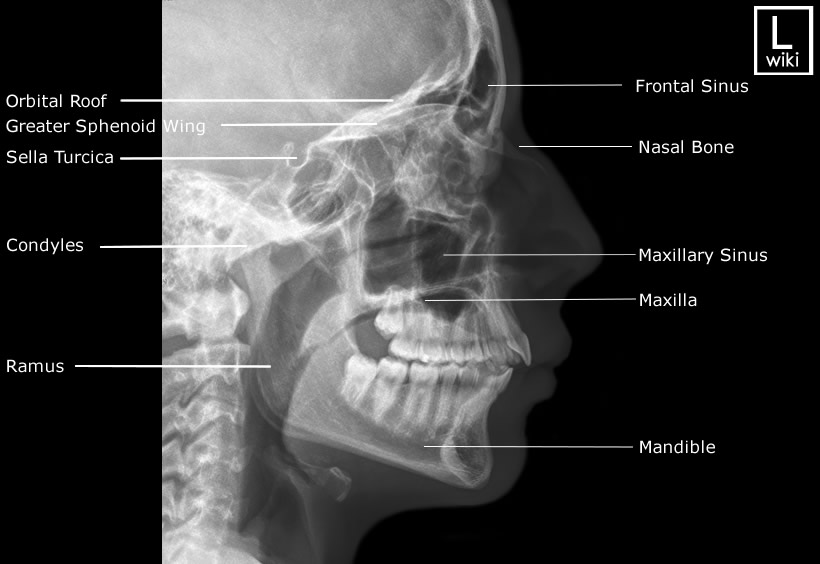
Facial Bones Radiographic Anatomy wikiRadiography
A facial X-ray is a series of pictures of the bones in the face. One type of facial X-ray (called a paranasal sinus X-ray series) looks at the air-filled cavities (sinuses) around the nose and eyes. A facial X-ray helps find bone fractures, tumors, foreign objects, infections, and abnormal growths or changes in bone structure or size.

Radiographic Anatomy of Facial Bones Radiology, Medical radiography, Facial bones
A facial X-ray is a series of pictures of the bones in the face. One type of facial X-ray (called a paranasal sinus X-ray series) looks at the air-filled cavities (sinuses) around the nose and eyes. A facial X-ray helps find bone fractures, tumors, foreign objects, infections, and abnormal growths or changes in bone structure or size. An X-ray.
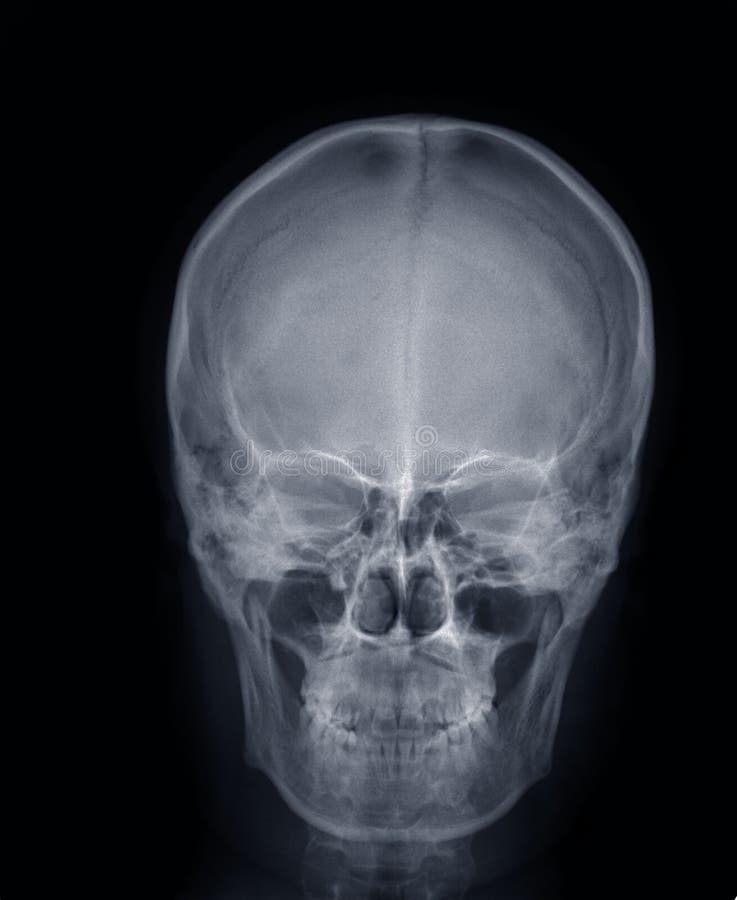
Xray picturehuman head stock photo. Image of diagnosis 10611516
A facial X-ray is a series of pictures of the bones in the face. One type of facial X-ray (called a paranasal sinus X-ray series) looks at the air-filled cavities (sinuses) around the nose and eyes. A facial X-ray helps find bone fractures, tumours, foreign objects, infections, and abnormal growths or changes in bone structure or size.

RxDentistry Radiographic Anatomy of Facial Bones
Face - Tripod fracture - OM view. A 'tripod' fracture has 4 visible components - not always all visible. 1 - Orbital floor fracture. 2 - Fracture of the lateral wall of the maxillary antrum. 3 - Zygomatic arch fracture. 4 - Widening of the zygomatico-frontal suture. Increased density of the maxillary antrum is due to it filling with blood.

2,358 X Ray Human Head Photos Free & RoyaltyFree Stock Photos from Dreamstime
Cases and figures. Figure 1: cranial landmarks. Figure 2: skull positioning lines. Case 1: normal Waters view skull x-ray. Case 2: normal facial bones. Case 3: with zygomatic arch fracture. Case 4: orbital blowout fracture with teardrop sign. Case 5: maxillary and frontal sinusitis.
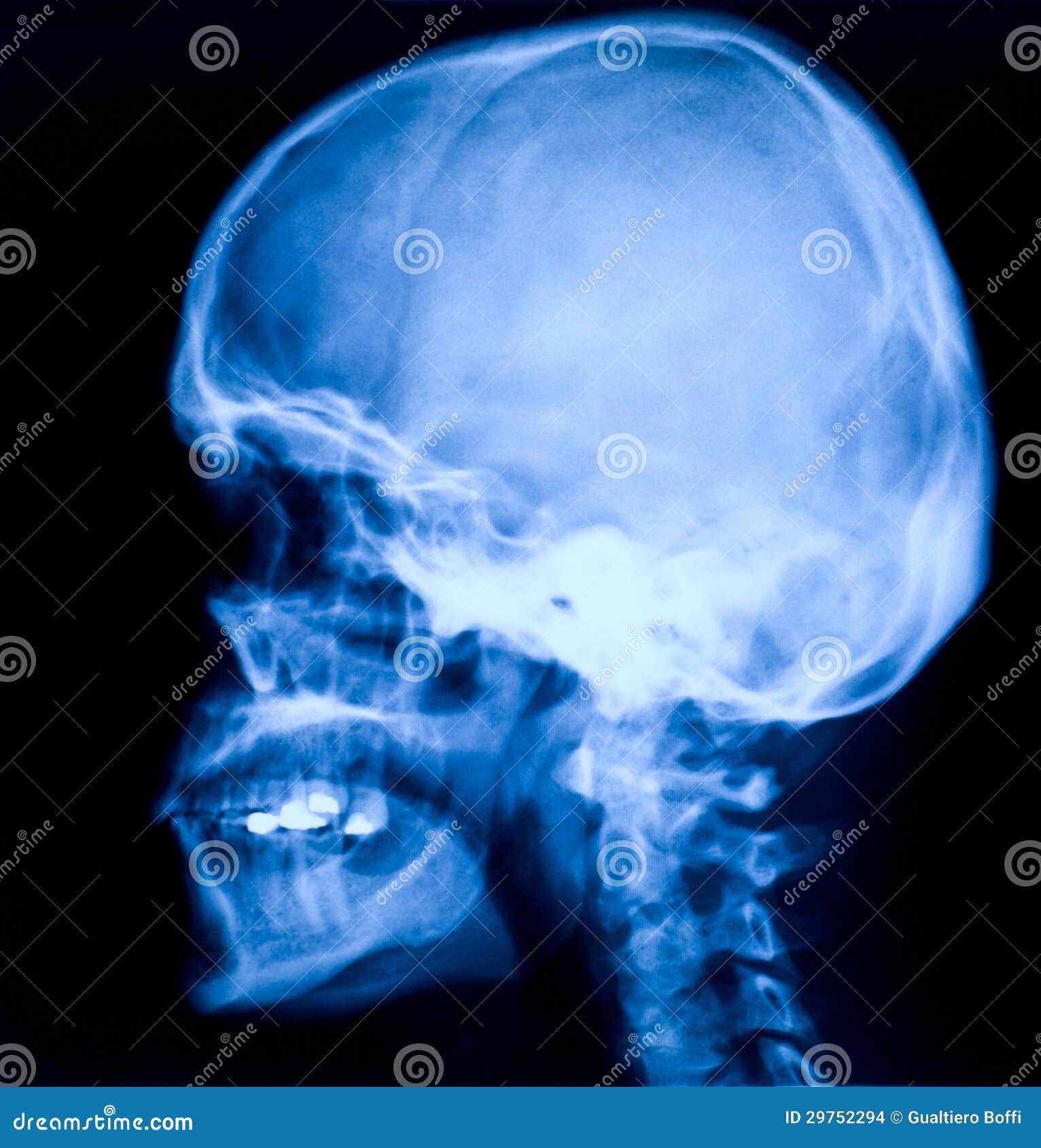
Head xray stock photo. Image of head, face, clinic, health 29752294
Written on 02/12/2016 , Last updated 31/07/2021 Cite this article as: Tessa Davis . Facial bone x-rays, Don't Forget the Bubbles, 2016. Available at: https://doi.org/10.31440/DFTB.10471 There are two views - occipito-mental view and occipito-mental 30 o view

Face XRay stock photo. Image of face, radiology, patient 1792828
Appearances of facial bone fractures as seen on X-ray. X-ray of facial bones. McGriggor-Campbell fracture lines on facial bone x-rays. Use of OM views - occipitomental X-rays for diagnosis of facial bone fractures. The zygomatic arch looks like an elephants trunk on facial bone X-rays. Description of zygomatic arch fractures, trpod fractures and blow out fractures of the facial bones as seen.

Xray/Face front stock photo. Image of diagnostic, illness 198832
X-rays are a type of radiation that can pass through the body. They can't be seen by the naked eye and you can't feel them. As they pass through the body, the energy from X-rays is absorbed at different rates by different parts of the body.

Facial bone xrays
Face X-ray is a method of radiation diagnosis of pathology of facial bones. It is used for visualization of the palatine, sublingual, maxillary, nasal, zygomatic bones and temporomandibular joint.

XRay of Skull and Face Stock Image C039/4288 Science Photo Library
Presentation Mild bruising and swelling over the right cheek after being assaulted, GCS of 15. Patient Data Age: 40 years Gender: Female x-ray Normal examination. No displaced facial or skull fracture noted. Case Discussion
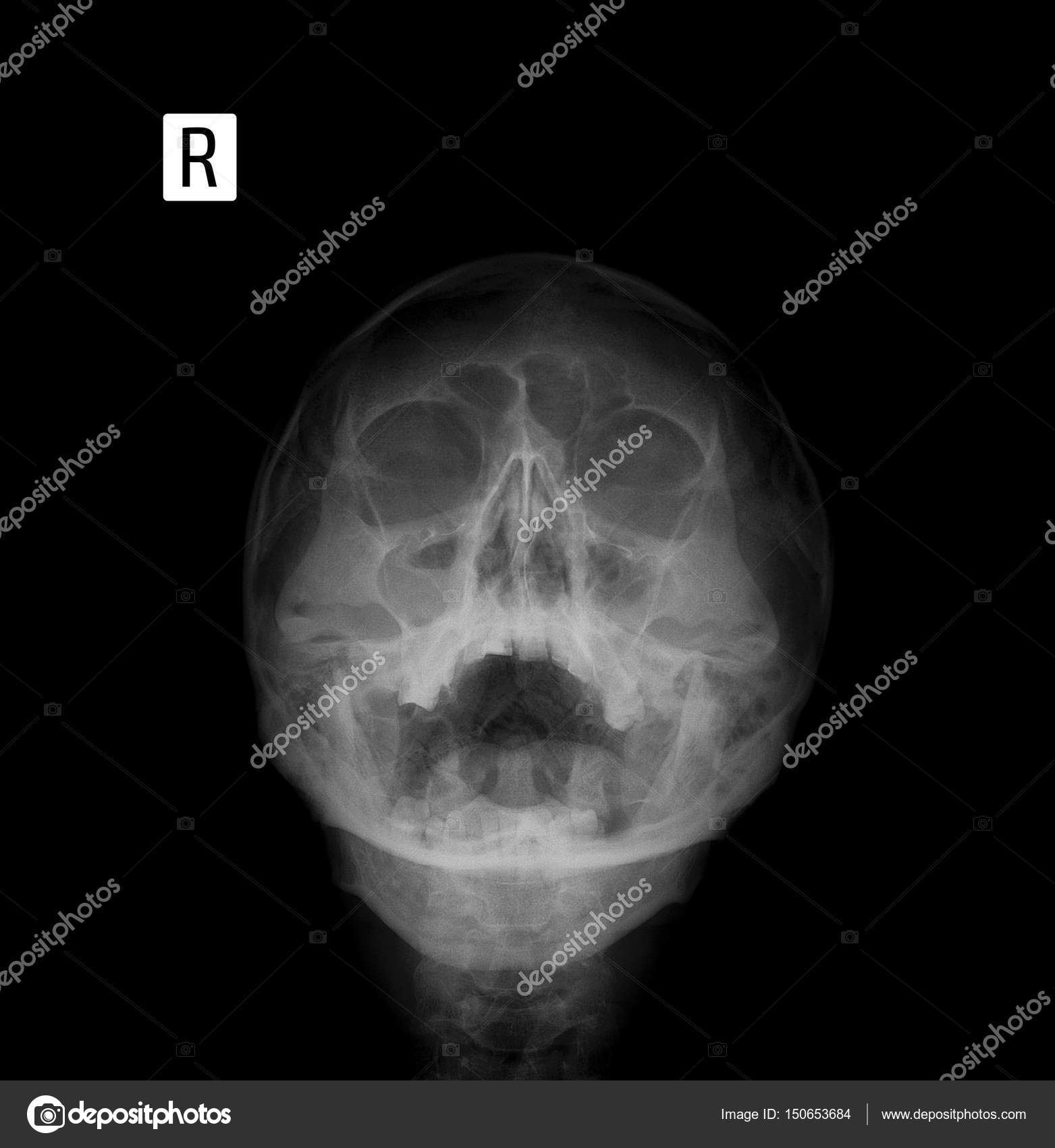
Xray film of the face frontal, nosechin projection. Sinusitis. — Stock Photo © vanzittoo
A facial X-ray is a series of pictures of the bones in the face. One type of facial X-ray (called a paranasal sinus X-ray series) looks at the air-filled cavities (sinuses) around the nose and eyes. A facial X-ray helps find bone fractures, tumours, foreign objects, infections, and abnormal growths or changes in bone structure or size.

Normal Childs Head Xray Foto de stock Getty Images
Image receptor: 10 × 12 inch (24 × 30 cm) lengthwise. The reverse Waters method is used to show the facial bones when the patient cannot be placed in the prone position. Position of patient: • With the patient in the supine position, center the midsagittal plane of the body to the midline of the grid. Position of part: